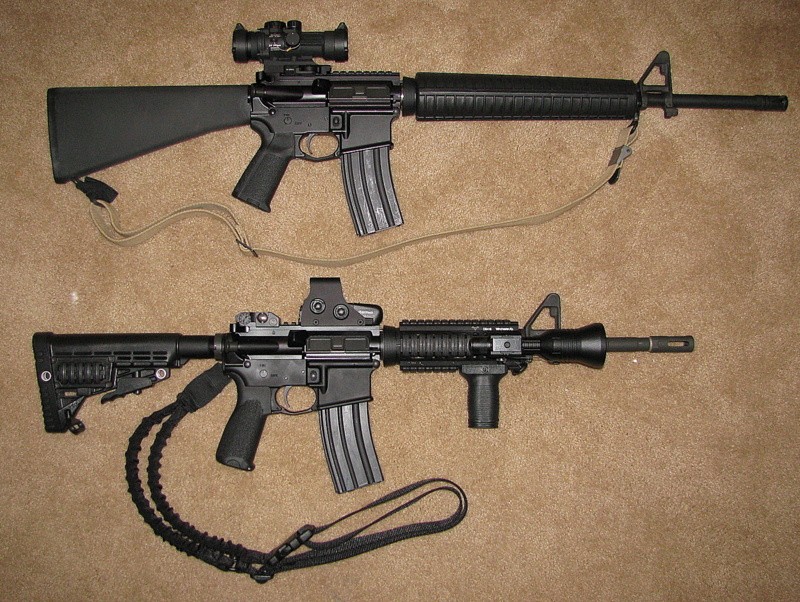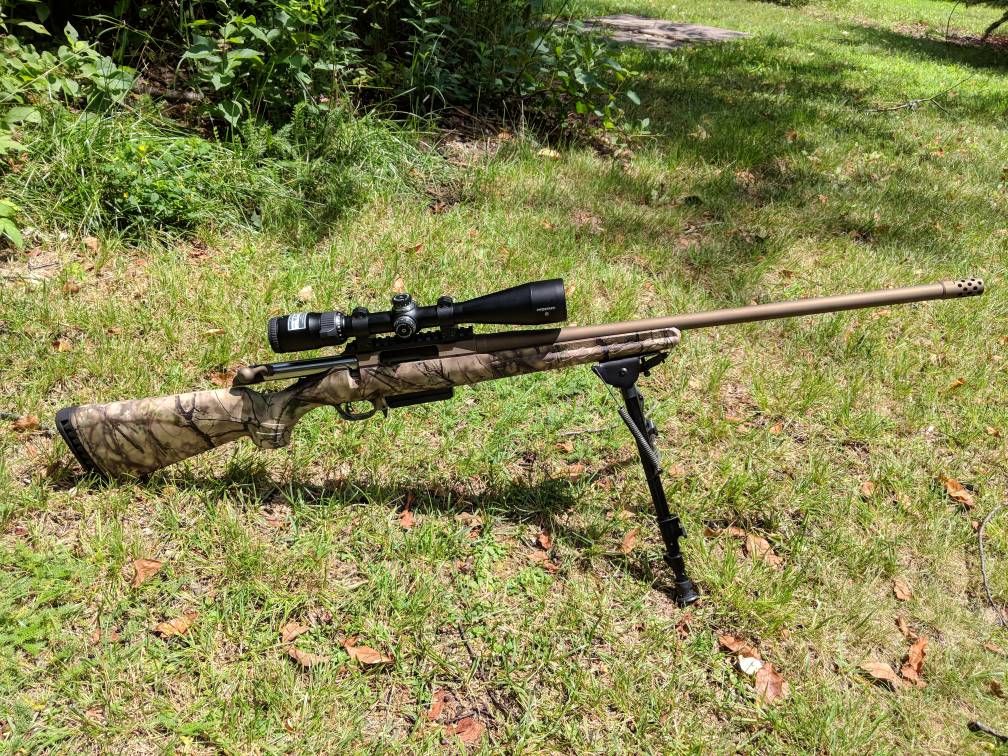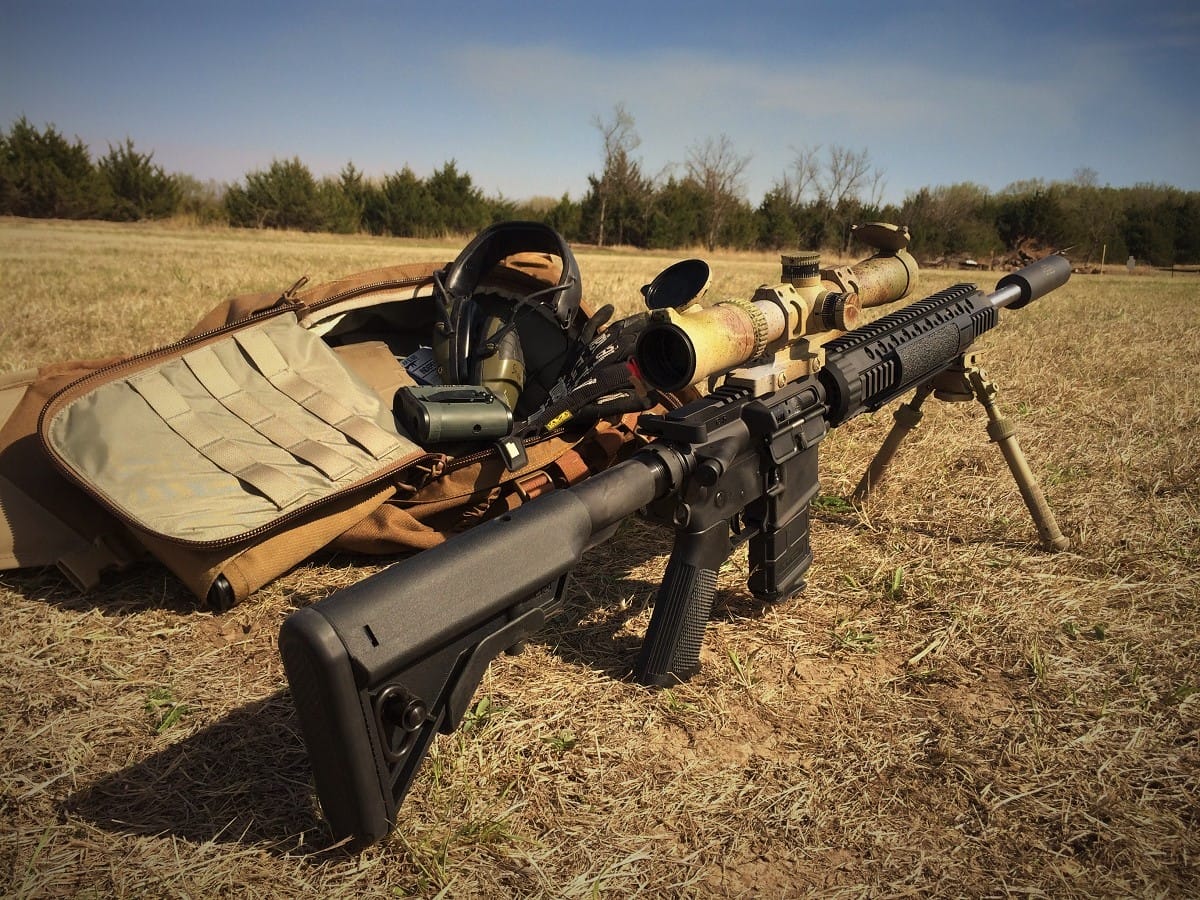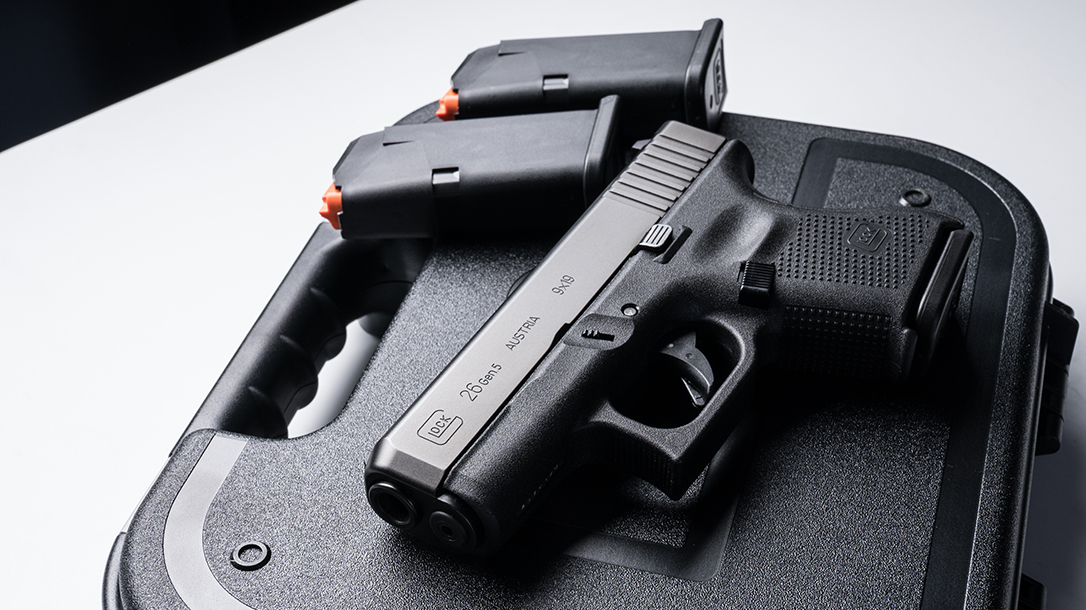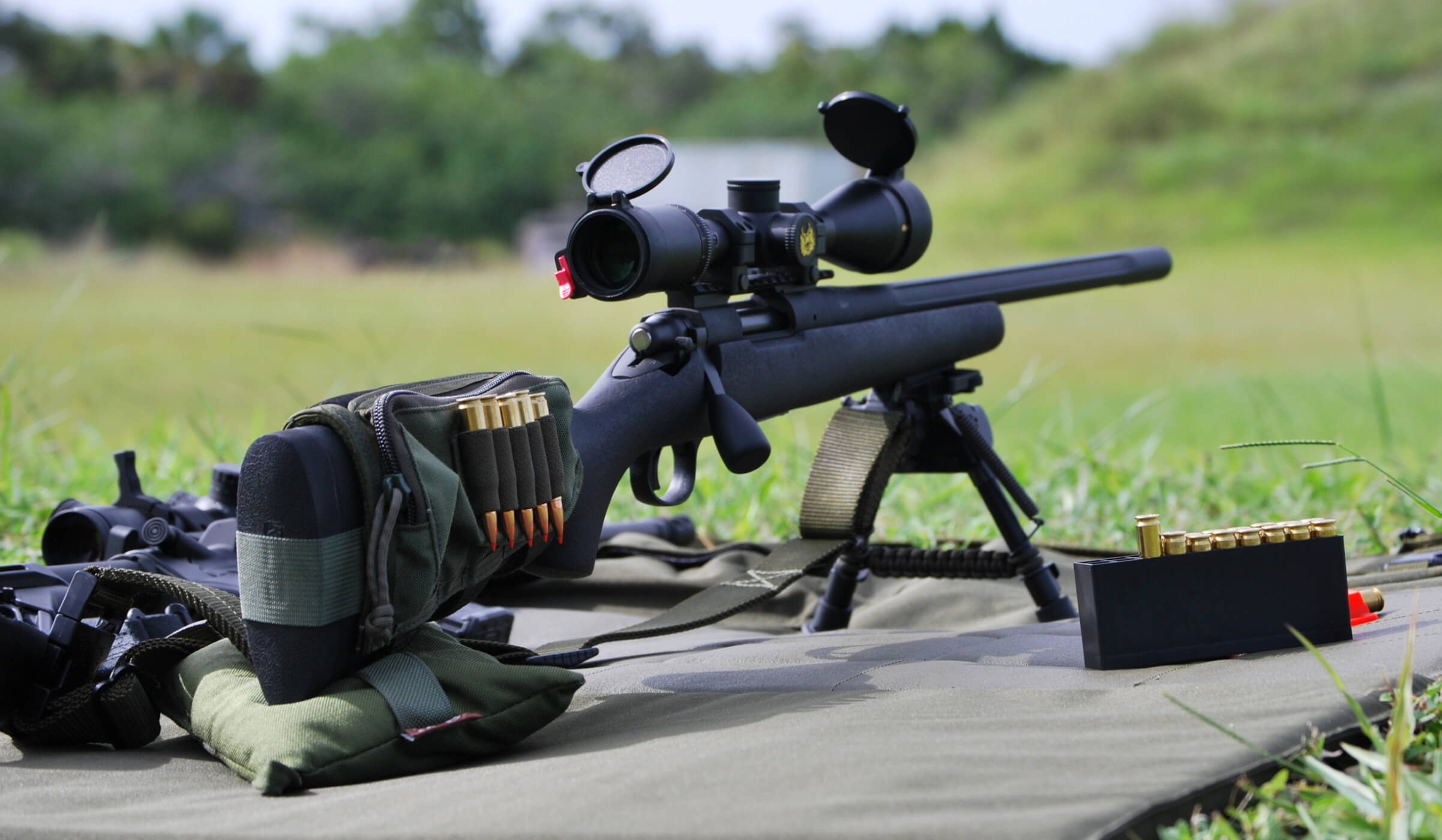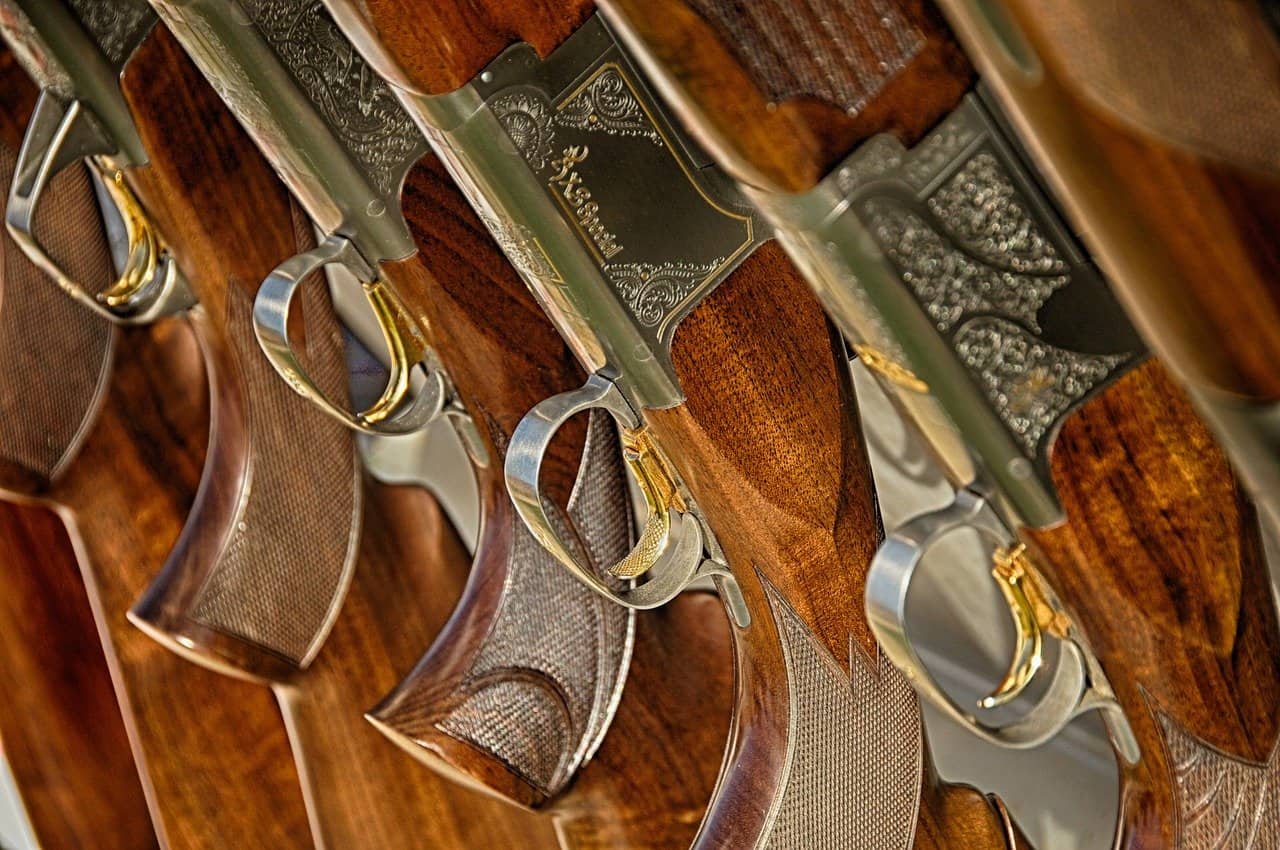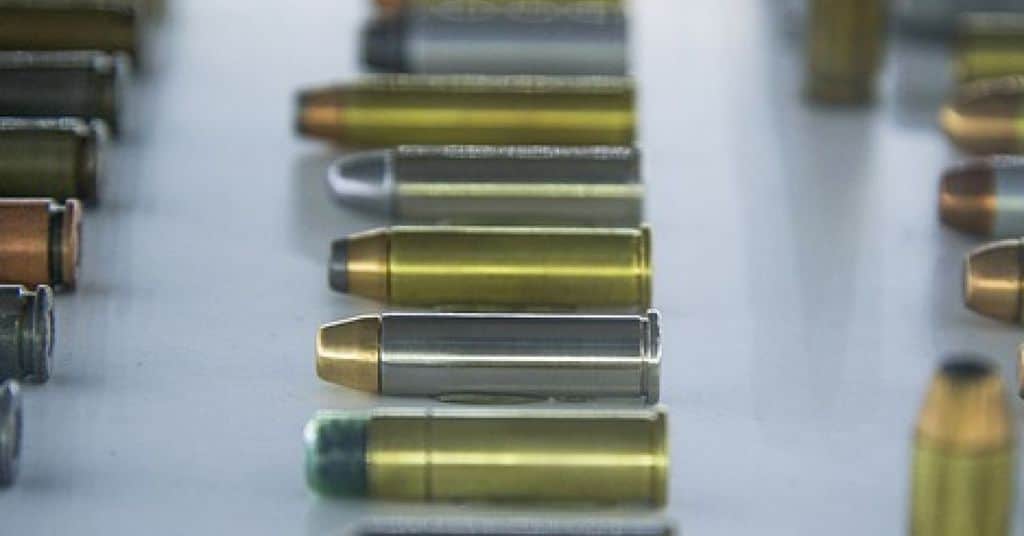When it comes to the difference between carbine and rifle, there have been all sorts of confusion over the years. A lot of shooters these kinds of days often fail to correctly tell one from another. It’s quite understandable actually as various weapons manufacturers and their customers use the terms in an inconsistent manner. That is why if firearm owners want to know the appropriate classifications for particular guns, they may have to go through a mountain of articles. Needless to say, not everyone is able to spare enough time and effort for that.
Need to read a summarized explanation of these firearms terms? If that is what you wish for then you have come to the right place. Check out the following information in order to learn the difference between carbine and rifle
Contents
Carbine Vs. Rifle: Basic Definitions
- What Is A Rifle
To put it plainly, a rifle is a precision-oriented gun that features a pattern of grooves cut into the bore wall of its barrel. The original term is “rifled gun” in which the word “rifle” refers to the machining process that creates the grooves. Like all typical firearms, rifles shoot out projectiles propelled by the deflagration of combustible propellants. Once fired, the projectile receives torque from the raised areas of the grooves which result in a spin around the longitudinal axis of the barrel. People use rifles in warfare, law enforcement, hunting and alike.

- What Is A Carbine
Originated from the French word “carabine”, carbine is usually used to describe long guns fitted with shorter barrels than rifles. Many carbines happen to be the shortened versions of full-length rifles: some use the same rounds as rifles while others shoot lower-powered ammunition. Nonetheless, several carbines have no rifle equivalents, being built from the ground up without any relation to previously existed weapons. Hence, it’s common for firearm manufacturers to release newly designed guns branded as carbines.
A Quick Look Through History
Generally speaking, from the 16th up to the mid 19th century, musket is essentially among the most prevalent weapons on the battlefield for individual soldiers. Over time, people notice the poor accuracy of the smoothbore weapon which motivates them to devise a variety of methods to improve the shooting precision. Through extensive tests, it was determined that by creating grooves inside the barrel (rifling), it’s possible to stabilize the projectile as it moves forward. The result is a noticeable increase in the accuracy of the shots in most conditions.
During the development of musket and the following rifles, a need to design lightweight, highly compact weapons for cavalry arises. Compared to ordinary infantry that fights on foot, cavalryman often needs to fight on horseback which means it’s dangerously cumbersome to carry long guns. At first, people tend to employ specialized horse pistols but as time passes, it’s decided to arm the cavalry with shortened muskets and rifles. That is how carbines come into existence which continues to see service up until today.
Through a lot of conflicts, the length of various present-day rifles tends to approaches the length of generic carbines. The reason behind the trend is that modern warfare often soldiers to maneuver in confined spaces which make carrying long guns for long durations awkward. Many countries, noticing that the long range of most full-length rifles only proves useful in certain cases, even decide to adopt carbines as standard issue weapons for soldiers in their army instead of rifles.
Modern Usage Of The Terms
Nowadays, length still remains the primary difference between carbine and rifle though there are exceptions. Overall, long-barrelled weapons that feature a barrel longer than 20 inches could be called rifles while those with a barrel shorter than 20 inches should be treated as carbines, unless specified otherwise. It’s worth noting that the length of some rifles fall short of 20 inches but people still designate them as rifles, namely the world famous AK series rifles from the former Soviet Union (now Russia).
All things considered, if you want to differentiate carbines from rifles, you must check out the length, the design and the purpose of the guns. On occasions, the difference between carbine and rifle may be somewhat blurry but follow the fundamentals to tell them apart.
Advantages And Disadvantages
- Carbine
Light, compact and portable, carbines excel in applications that require firepower as well as mobility. For most of the time, they offer stable shooting platforms that allow shooters to engage their targets effectively and efficiently at a moment’s notice. On the downside, carbines experience a couple of issues with velocity and muzzle flash due to their short barrel, especially ones that use powerful rounds. Additionally, while carbines offer more controllability than pistols, the concealability is not nearly as good.
- Rifle
Able to hit targets at medium to long ranges, rifles remain the ideal choice for marksman, hunters and competitive shooters. Considering the fact that rifles have long barrels, they rarely run into issues with velocity and muzzle flash since the propellants have times to burn. In exchange, the rifles may give people a fairly hard time in close-quarters because of their dimensions and weight. Therefore, some militaries as well as law enforcement forces field carbines, submachine guns, shotguns,… instead of rifles in many situations.
A Note About Pistol Carbines
Nowadays, it’s a breeze to purchase carbine conversions kits for pistols that come from Colt, Glock and so on. The majority of the kits on the market often include shoulder stocks, new barrels, … which transform conventional handguns into carbines. However, have you ever wonder why it’s necessary for carbine conversions kit to come along new barrels for pistols?
Well, technically, if you fit a shoulder stock to a pistol with a barrel shorter than 16 inches, what you have is a short-barreled rifle. The Bureau of Alcohol, Tobacco, Firearms and Explosives (ATF) put forward a lot of restrictions regarding the ownership, movements and transfers of short-barreled rifles. As a result, to avoid troubles, carbine conversions kits normally include new barrels to get the length of over 16 inches.
Last Updated on August 1, 2019
